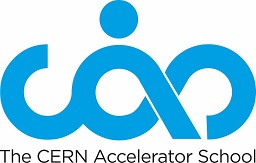The lecture is a refresher at the level of high school and the first year of engineering school. It covers electrostatics (Coulomb force, electric field, potential energy and Gauss Law), magnetostatics (magnetic forces, Amperes law, magnetic moments, magnets), electric and magnetic induction (Faraday Law, Ampere-Maxwell Law), Maxwell equations in integral and differential forms and...
The goal of this lecture is to introduce the basic concepts of special relativity without overloading formulas. The theory of special relativity, originally proposed by Albert Einstein in his famous 1905 paper, has profoundly affected our view of physics, space, and time. This lecture briefly introduces the concepts behind special relativity, including length contraction, time dilation, the...
The lecture delivers a basic overview of the terms and principles of particle production and extraction, including some plasma physics and a general ion source model. This information is further elaborated with the help of some examples of electron sources and ion sources.
We review the basic principles that lead to our current understanding of the fundamental elements of matter and their interactions, as codified in the so-called Standard Model of particle physics. Starting from the two pillars, Quantum Mechanics and the Special Theory of Relativity, and the resulting picture of interactions as the result of particle exchange, we will address the question of...
This lecture gives an introduction to the dynamics of the transverse motion of the particles in an accelerator or storage ring. Following the general tenor of the school, special focus is put on a basic level of the explanations and so
tedious mathematical deductions are avoided and replaced by logical arguments and equivalent descriptions in other fields of physics.
As a consequence the...
This lecture gives an introduction to the dynamics of the transverse motion of the particles in an accelerator or storage ring. Following the general tenor of the school, special focus is put on a basic level of the explanations and so
tedious mathematical deductions are avoided and replaced by logical arguments and equivalent descriptions in other fields of physics.
As a consequence the...
In this lecture we review the fundamental principles of a linear accelerator, we look at different types of RF structures both in the TE and TM mode and we discuss their use at different velocities and/or charge over mass. We also discuss basic principles of dynamics (transverse and longitudinal phase advance) during acceleration. The lecture builds on examples taken by the present and past...
This lecture gives an introduction to the dynamics of the transverse motion of the particles in an accelerator or storage ring. Following the general tenor of the school, special focus is put on a basic level of the explanations and so
tedious mathematical deductions are avoided and replaced by logical arguments and equivalent descriptions in other fields of physics.
As a consequence the...
This lecture gives an introduction to Beam instrumentation in particle accelerators.
It describes the physical processes and the technologies involved in the monitoring of beam
intensity, beam position, transverse and longitudinal beam profiles as well as beam losses.
The lecture also presents a series of examples of instruments currently used at CERN.
